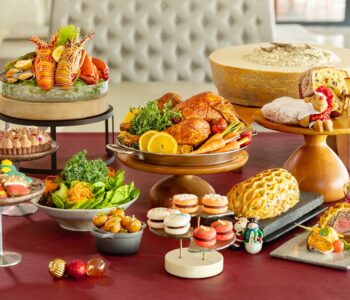To me, Bali is like a beautiful, elegant lady that people from around the world admire. She is so pretty and unique that she doesn’t have to do anything or make a move, and many are still attracted and fall in love with her. Sadly, today, Bali has become a cheap woman. She sells herself to gain profit
Niluh Putu Ary Pertami
(Founder of Niluh Djelantik)
Many consider the condition of today’s Bali as unpleasant due to the island’s mix-bag tourism projects in combination with the ridiculous commercialism. Snarled traffic, city hotels and rubbish-strewn beaches are not images most associate with the Island of the Gods. But this is increasingly the reality in Bali, as rampant over-development and failing infrastructure threaten to destroy the island’s legendary beauty.
“Niluh Djelantik was the first shop ever established in Petitenget. Today the area is packed and over-crowded. Road constructions seem to always take place, and building constructions are just so crazy that they don’t leave room for gardens parking. It’s non-stop development now. What I don’t get is, how did they get the permit and building license in the first place,” Niluh said.
The beautiful Balinese lady used to envision Seminyak and Petitenget as a somewhat ‘Little Paris’ in Bali, with pretty shops and cafes lining both sides of the road and proper sidewalks to allow pedestrians to conveniently explore the area.
“How many convenience stores do you think we need on a short, small road like Petitenget? And they all sell the same thing. The reason why I design shoes from 100% leather is because we already have plenty of other shoemakers in Bali that design their shoes with beads and other materials. I don’t want to compete with them; I want to add more varieties and give more options for those looking to buy a pair of shoes to choose from so that we don’t kill each other’s business, especially the small-middle scale businesses on which the locals depend.”
According to Niluh, Bali is an island, not a building – so there’s no way it can be stacked up into several stories. “Don’t get me wrong, I’m not against development. I’m against over development and exploitation.”
Get in touch with Niluh Djelantik via
niluh@niluhdjelantik.com.
[vc_raw_html]JTNDaHIlM0U=[/vc_raw_html][vc_column_text]
[/vc_column_text][vc_raw_html]JTNDaHIlM0U=[/vc_raw_html][vc_row_inner][vc_column_inner width=”1/3″][vc_single_image image=”25783″ img_link_target=”_self”][/vc_column_inner][vc_column_inner width=”2/3″][vc_column_text]
TRADITIONAL TENGANAN
Tenganan, an old Balinese village located close to Candidasa area, still maintains a strict cosmology and social organisation. Even today, the villagers must live inside the village and marry from within. The village itself is of a long rectangular shape, which is laid out in tiers, with wide stone steps in between. The houses are constructed out of bricks with no outer layer covering them.
The villagers are known as fine makers of basket ware and double-weave ikat (traditional woven cloth) and also the calendar that is written on palm lontar leaves. Visitors are welcome to step into a number of houses there to see a villager while weaving the ikat and/or making the basket. The best thing is there’s no pressure for you to buy their products.
[/vc_column_text][/vc_column_inner][/vc_row_inner][vc_row_inner][vc_column_inner width=”1/1″][vc_raw_html]JTNDaHIlM0U=[/vc_raw_html][/vc_column_inner][/vc_row_inner][vc_row_inner][vc_column_inner width=”1/1″][vc_column_text]
HISTORICAL KLUNGKUNG
Klungkung bears an important part in the history and culture of Bali, so it is strange to learn that this place is far quieter than crowded Kuta and/or Ubud; especially because around 700 years ago, in the 1300s, Klungkung was the base of the ruler of the island. That means, this region is home to many historical bits and pieces left for today’s world to see.
[/vc_column_text][vc_single_image image=”25785″ img_link_target=”_self”][vc_column_text]
For example, the Hall of Justice (Kerta Gosa) was built in the middle of the 18th century and is now still standing in the centre of Klungkung Town. This court hall is built in the middle of a pond and is particularly known for its magnificent ceiling paintings. The paintings themselves depict heaven, which will reward those who obey law and order in their lives, and the horrors and punishments that await the sinners. In the centre of the hall are a rectangular table and six chairs for three judges, who were priests, and three assessors.
[/vc_column_text][/vc_column_inner][/vc_row_inner][vc_row_inner][vc_column_inner width=”1/1″][vc_raw_html]JTNDaHIlM0U=[/vc_raw_html][/vc_column_inner][/vc_row_inner][vc_row_inner][vc_column_inner width=”2/3″][vc_column_text]
COMMERCIAL UBUD MARKET
Located right in the centre of Ubud, Ubud Market is a shopping paradise not only for the Balinese, but also for visitors. Divided into two sections, the traditional market and art market, this venue is crowded with shops and stalls selling souvenirs, apparels, art and crafts, fresh produces, herbs and spices, groceries, flowers, accessories, jewellery, and much more. The traditional market starts early at around 4am, while the art market opens from 8am to around 6pm.
Home decorations such as candle holders, scented candles, incense, pretty tablecloths, and even placemats are sold at very good prices here. You can always bargain, but please be generous. Even if you’re paying full price, it’s still cheap! Come early in the morning and you’ll find yourself in the midst of the market, with hordes of Balinese people shoving and hurrying and haggling in overwhelming numbers around you – in the air is the scent of fruits mixed with the strong odour of spices. All in all, this place is not just a market, it’s an experience.
[/vc_column_text][/vc_column_inner][vc_column_inner width=”1/3″][vc_single_image image=”25784″ img_link_target=”_self”][/vc_column_inner][/vc_row_inner][vc_row][vc_column][vc_column_text]
[/vc_column_text]










